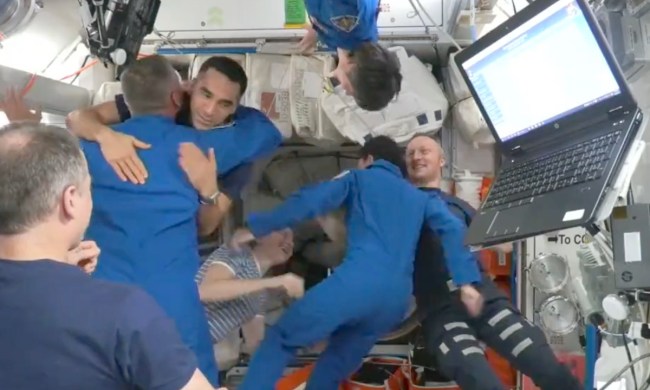SpaceX’s Dragon capsule successfully docked with the International Space Station (ISS) on Sunday, delivering a bunch of supplies and experiments that included everything from a group of genetically engineered mice to a floating robot called CIMON.
The crewless Dragon capsule docked with the orbiting outpost three days after launching atop a SpaceX Falcon 9 rocket from the Kennedy Space Center in Florida last week.
.@Astro_Luca shares a congratulatory message after he and @AstroDrewMorgan caught the @SpaceX #Dragon at 5:05am ET today with the @CSA_ASC Canadarm2 robotic arm. Read more… https://t.co/99GpYE9gpQ pic.twitter.com/Bmusbyo2xl
— Intl. Space Station (@Space_Station) December 8, 2019
The mice, dubbed “mighty mice” for their genetically altered genes that enhance muscle growth, have been prepped by the Jackson Laboratory in Maine. Their mission is to help scientists learn more about the effects of microgravity on muscle and bone degeneration. They’ll stay onboard the space station for the next 30 days before returning to Earth next month. The rodent-based research is considered highly important as NASA eyes longer manned missions to the moon, as well as crewed trips to Mars and beyond.
Besides helping scientists to understand how they might be able to prevent muscle and bone loss in astronauts during space flight, the research will also help enhance our understanding of muscle degeneration in humans on Earth, a process that affects not only the elderly but also those who find themselves bed-ridden through a muscle-wasting disease or other condition.
CIMON, the “flying brain”
Also making itself at home on the ISS is CIMON-2 (short for Crew Interactive MObile companioN), an updated version of the original CIMON robot that spent 14 months on the ISS. The visit marked the first time for the space station to host an artificial intelligence (A.I.) system.
Developed by Airbus and IBM in collaboration with Germany’s DLR space agency, CIMON is essentially an advanced floating computer that aims to keep astronauts company while also assisting them in their work.
The robot, which uses small fans to float around in the microgravity conditions, can see, hear, talk, and comprehend. And the more it interacts with crew members, the more its abilities will develop. Its impressive smarts once prompted a member of the Airbus team to describe CIMON as “a kind of flying brain.”
The latest version of the robot includes improved A.I. capabilities, enhanced stability of its complex software applications, more advanced microphones, and a better sense of direction.
So long as nothing goes awry, CIMON-2 is expected to stay aboard the space station for up to three years.
SpaceX has a contract with NASA to continue resupply missions through 2024, with the space company currently testing a crew-carrying version of the Dragon in preparation for its first-ever launch with astronauts on board.


